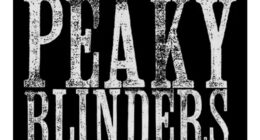The benchmark Nikkei 225 ended the day 4451 lower, which is the biggest drop by number of points in history.
The index finished more than 12 per cent down, pushing its losses to 24 per cent since early July.

The index has now entered bear market territory, which is defined as a 20 per cent pullback from recent highs.

On Friday, the Nikkei closed down 5.8 per cent, marking its biggest daily drop since March 2020, as traders fretted about the impact of a stronger yen on Japanese companies after the Bank of Japan (BOJ) signalled further rate hikes could be on the way.
A rising yen would hurt exporters and companies with overseas earnings.
A rapid appreciation in the Japanese currency has also forced many market participants to unwind the yen carry trade, a hugely popular trading strategy.
Last week, the yen surged nearly five per cent against the greenback.
On Monday, it strengthened further, up 2.2 per cent to trade at 143.3 per US dollar.
“This beefier yen set off a domino effect, triggering a global unwinding of carry trades,” said Stephen Innes, managing partner of SPI Asset Management.

Last week, the BOJ raised interest rates by 15 basis points to 0.25 per cent in its second hike this year and announced plans to taper its bond buying.
Traders expect more rate hikes to come later this year as the central bank tries to contain inflation.
China reported last Wednesday that its official manufacturing PMI fell in July, signalling continued weakness in factory activity.
Intel (INTC), on the same day, reported an income loss of US$1.6 billion ($2.4 billion) in the second quarter and announced plans to slash 15 per cent of its workforce to reduce costs.
Other Asia-Pacific markets also tumbled on Monday.
The Dow closed 1.5 per cent lower, the S&P 500 lost 1.8 per cent and the Nasdaq Composite declined 2.4 per cent.

These are the world’s most valuable brands
The Nasdaq closed in correction territory, or more than 10 per cent off its most recent high on July 10.
CNN’s Fear and Greed index, which measures market sentiment, has fallen to a “fear” reading of 27.
Other markets are also showing jitters.
On Friday, oil prices settled at their lowest levels since January.
Brent crude futures and US WTI crude were both down more than three per cent.
“Beginning with the Hamas action last October 7, we are seeing mostly apathy when it comes to fears about a wider regional war in the Middle East,” he said.
“It would probably take an outright attack on Iranian soil to spark any real surge in prices due to geopolitics,” Kloza added.
“It will take something quite dramatic to send oil prices scurrying higher and there is a strong desire in Washington to do whatever it takes to keep a lid on gasoline prices,” he said.







